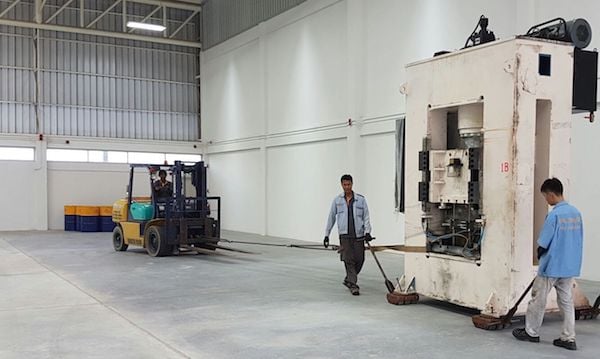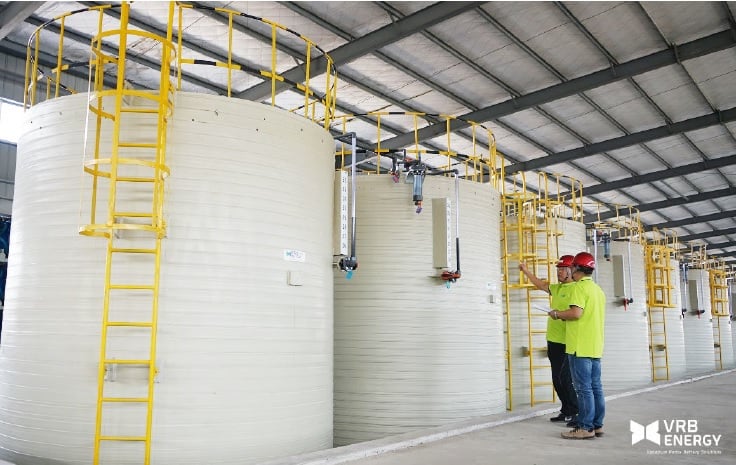The International Flow Battery Forum is taking place this week and long-time organiser, Anthony Price of consultancy Swanbarton, wrote to Energy-Storage.news with some of his views on the market and a snapshot of where development currently lies.
As we’ve written extensively in these pages previously, flow battery providers are hoping to commercialise a technology which decouples energy and power and therefore promises long durations of energy storage and greatly increased capacities made possible, without a huge rise in cost to match.
Enjoy 12 months of exclusive analysis
- Regular insight and analysis of the industry’s biggest developments
- In-depth interviews with the industry’s leading figures
- Annual digital subscription to the PV Tech Power journal
- Discounts on Solar Media’s portfolio of events, in-person and virtual
As detailed in my feature article for this site and for our quarterly journal, PV Tech Power, ‘Long time coming’, many manufacturers or systems designers are confident that their systems can survive a long time in the field and rugged use and reuse. In that piece, we focused on the tech, strategies and ambitions of four different providers.
However, with flow batteries, many of which are based on using vanadium as electrolyte in scalable tanks, there is a higher upfront cost associated than with lithium-ion batteries, which stands as a significant barrier to commercialisation, even though over the lifetime of the system(s), flow may well pan out cheaper overall.
There are also currently only a handful of business cases that can be built out of long-duration energy storage at present and while widespread expectation is that as we go further into the renewables age, this need will dramatically increase, it is yet to be seen on a global scale.
Yet attendees at this week’s event, including Avalon Battery – supplier to NEXTracker’s integrated solar-plus-storage product line, VRB Energy – currently working on some of China’s biggest energy storage system (ESS) projects and redT, which recently blogged for this site, will be hoping these changes come sooner rather than later.

Anthony Price explains:
“There is a huge demand for energy storage – clearly the demand for network-connected storage is going to be big – just look at the rush to understand the economics and practicalities of linking storage with solar and wind generation to appreciate the inherent market. But storage did not start with renewables and won’t end there either.
Lithium-ion batteries came from applications in small devices, into EV and then across into stationary applications. The route for lead-acid was slightly different, starting with stationary applications and then moving rapidly into electric vehicles before settling into a major role in vehicle starting lighting and ignition roles.
Flow batteries have had part of their pedigree in transport applications – some early zinc-bromine and vanadium systems were used in cars and golf carts. With low-cost construction of the cells and low-cost electrolyte, these could have been winners, but getting the market scale-up somehow eluded the few manufacturers in the business.
But if we examine the fundamentals of putting a battery together, flow batteries can continue to make a convincing case. Low cost for manufacture, long lifetimes and low degradation, recyclable materials, and almost zero fire risk mean that these could be winners. That’s why there are so many start-up companies in the business.
Of course, it’s not just flow batteries that are trying to catch up with lithium-ion as the go-to battery choice. Our friends in the liquid air and high-temperature ceramic batteries have similar low-cost profiles, but are not the battery or storage system of choice. Why is this?
Well, bringing experts together for this week’s forum in Lyon, France, gives us a chance to compare notes. We can talk about improving performance, lowering costs and increasing market share. We’ll hear about the challenges of writing effective international standards.
I’d love to think that we will hear about the magic application – the one single convincing argument that would make everyone rush to make, sell and others to buy and use flow batteries.
In fact, there are many such applications – moving the solar peak needs hours of storage, responding to fluctuations in wind generation needs a battery that can be treated harshly for many cycles, both shallow and deep, balancing the smart grid is a completely new application and no simulation is going to get the performance characteristics right.
My feeling is that a little bit more storage duration is going to pay rewards in the longer term.
I look at the recent rush to build half-hour batteries in Britain to catch the frequency market, and see that when the prices for frequency collapsed, these batteries are now struggling to find economic returns. The longer duration systems can catch the market opportunities as the system’s needs change, and storage developers are now seeking more complex trading models.
The smart money is on thinking differently. At previous IFBF meetings, we have discussed the role of flow batteries in microelectronics with researchers from IBM, heard about NASA’s plans for flow batteries, met delegates from Google, car manufacturers and EV developers.
This year, our delegate mix includes representatives from the aerospace industry, renewable generator equipment suppliers, power companies, network companies, as well as manufacturers, suppliers and developers.
There will be conversations on the side about using storage in transmission and even making storage work as transmission.
One thing is certain – there is enthusiasm to make storage work, and those who have invested their time, money and brain power into flow batteries are ready to face the competition.
International Flow Battery Forum is taking place in Lyon, France, this week, 9-11 July 2019.


